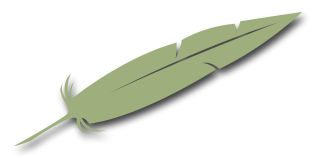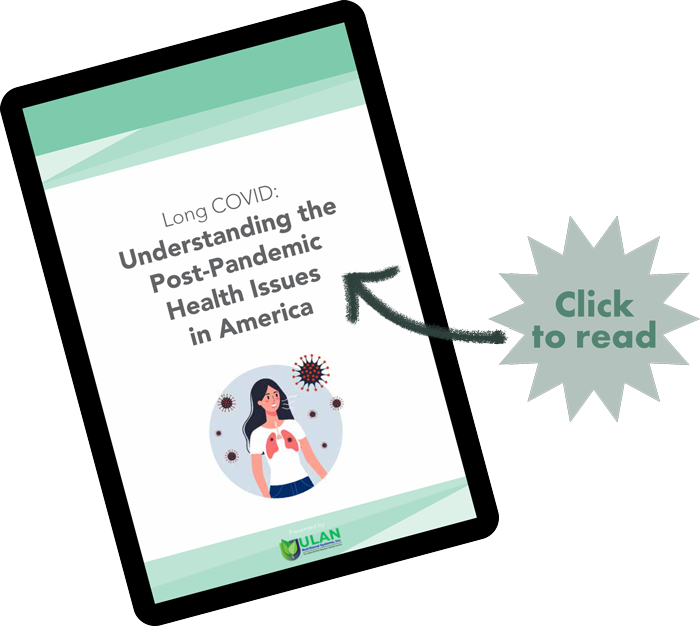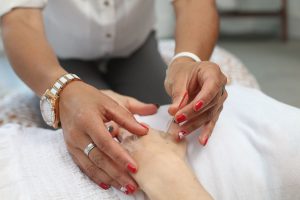- WE MOVED !!!
-
 Professional Acupuncture & Physical Therapy1118 East Superior Street
Professional Acupuncture & Physical Therapy1118 East Superior Street
Duluth, MN 55802(218) 724-3400 Clinic Hours
Mon8:00 am - 4:30 pmTue1:45 pm - 4:30 pmWed8:00 am - 4:30 pmThu8:00 am - 4:30 pmFriCLOSED

- Long Covid Booklet
Traditional Chinese Medicine
Healthy Eating for Spring
 Spring is a time of renewal, regeneration, growth and energy. Plants and animals awaken from their slumber during the cold winter months, and vital nutrients stored in the roots of the plants and bodies of the animals come to the surface as life becomes more vibrant and fluid.
Spring is a time of renewal, regeneration, growth and energy. Plants and animals awaken from their slumber during the cold winter months, and vital nutrients stored in the roots of the plants and bodies of the animals come to the surface as life becomes more vibrant and fluid.
Human beings are no different. Humans stay indoors more during the winter months, and tend to pack on a little extra weight in the process. As the weather warms, humans become more gregarious and spend more time outside enjoying nature. This is just a natural process.
Therefore, it makes sense that what was observed by the ancient Chinese should still hold true today. Humans are supposed to take their cues from nature. As a species, humans should be more active during the warmer spring months. And to do this, we need proper nourishment. Qi (pronounced “chee”) is sometimes translated into energy. This Qi is the vital substance that keeps our bodies functioning until the day we die. To keep the Qi plentiful, we need to eat the proper foods at the proper times.
During the spring, we should be eating foods that have upward energies, such as green, sprouting vegetables. But we also need foods that will provide the extra nourishment for the increased amounts of activity that accompany the season of spring. This is where sweeter foods play a vital role. Foods such as fruits, nuts, yams, carrots and potatoes can provide the extra energy needed during the spring. But be careful not to overdo it. Too much sweet can overload the body and make it sluggish.
Sweets should be countered with pungent foods. Pungent foods aid in the movement of Qi upwards and outwards through the process of perspiration. Pungent flavored foods include scallions, onions, ginger, radishes, garlic, leeks and chives.
According to Traditional Chinese Medicine theory, spring is the season of the liver and the gallbladder. These organs regulate a smooth flow of energy throughout the whole body. However, they are prone to stagnation because we do not take proper care of ourselves. This can manifest as anger, irritability, depression, insomnia and even pain. Stagnation can occur when people eat too many poor-quality foods that may be full of chemicals.
Foods that help ward off stagnation include foods rich in chlorophyll, such as wheat grass, spirulina, chlorella, parsley, kale, Swiss chard and collard greens. All of these foods are abundant during the months of spring. It is also a good idea to have a glass of warm water with a slice of lemon first thing in the morning. This will help detoxify the liver and gallbladder to start the day off fresh. Lastly, foods that have a slightly bitter taste can help ward off heat in the liver. This includes foods like asparagus, quinoa, romaine lettuce and dandelion tea.
If you are curious about how to eat according to the seasons, contact us at (218) 724-3400. We will be able to guide you along your healing journey through the use of Traditional Chinese Medicine and nutritional counseling.
More Than Meets the Ear

“My, what big ears you have!”
“ All the better to hear you with!”
Or, if you’re a Chinese Medicine practitioner: “All the better to live a long, healthy life with!” That’s because the ears are a manifestation of the kidneys which hold our essence (jing), our genetic potential, and large ears can be an indication of health and longevity.
Acupuncturists and Chinese herbalists have long understood this connection between the ears and the kidneys, relating issues such as hearing loss, tinnitus, and ear infections to imbalances of the kidney qi. In clinical practice we will treat the kidneys while working with these types of disorders. Interestingly, Western medicine also recognizes a relationship between the kidneys and the ears. The inner ear and the kidneys develop at the same time in utero, so if a baby is born with hearing issues, a good doc will know to immediately check the kidney function. Ongoing research is still exploring the parallels of specific aspects of the inner ear to renal function.
The ears are also a valuable microsystem in Chinese Medicine practice. Being a manifestation of the kidneys which govern our development, the ears are actually a map of our development. They reflect the whole body and have their own complete acupuncture point system as such. Picture an upside down fetus when looking at the ears in this way, with the head at the lobe and spine curving up to the little baby bum at the top, with internal organs on the inner portions of the external ear. Paul Nogier, a French Neurologist, is actually considered the father of auricular medicine, as he measured the electrical conductivity along the skin of the ear and recorded the specific points as a reflexology system, which was then incorporated into Chinese Medicine texts. He based his understanding of this system on the correlating tissue types and innervation between various parts of the ear and the parts of the body they represent.
“The ear is one of the few anatomic structures which are built up of tissue from each of these three primary tissue types to be found in an embryo. Paul Nogier maintained that each tissue type in the ear had a link to the various somatotopical reflections and to the innervation related to that part of the ear.”
Many Chinese Medicine practitioners diagnose and treat the whole body just using the ears. Abnormalities, tenderness, discolorations, etc. on the ear can signal issues in the correlating part of the body. There have been studies done to test these practitioner’s accuracy. In one study, pre-established medical diagnoses matched with auricular diagnoses over 75% of the time. Treatment can then be done with needles or ear seeds. The benefit of ear seeds is that they can stay on the ear for up to a week, providing continuous stimulation of the ear acu-point. Practitioners can also train patients in administering their own ear seeds for home use. Ear treatments have been used successfully in the treatment of addictions, chronic pain, anxiety and weight loss among many other conditions.
A simple way to experience the amazing healing potential of your own ears is to massage them! In addition to all the acupressure points you will be activating, the ears are actually the only external access (via the auricular branch) we have to the Vagus nerve (the longest nerve) in the body. Stimulation of the vagus nerve has tremendous benefits, including relaxation, improved digestion, cognitive function and calming inflammation. So go ahead and give your ears some love and attention… and respect for the amazing body parts they are!
Winter is a great time to get some ear acupuncture, as it is kidney time in the Chinese Medicine understanding of the seasons. Schedule today, and ask Heidi to include an ear seed or 2 if appropriate for you. This can help direct your ear massage to points personalized for you and what you need!
Effortless Healing: Can Imbalances Clear up on their Own?

Short answer: Yes.
Long answer: Yes, but…..there are a few things to consider when relying on our ‘natural propensity towards health’. The most important of which is entropy, the second law of thermodynamics, a disorderly force we must contend with. It runs counter to the organizational efforts of nature, but also works in balance with them, in yet another dynamic expression of yin and yang.
Entropy is played out in living systems as the natural deterioration of the body. As we age past mid-life our body tissues and physiological systems gradually lose their vibrance. Structure and function suffer, as entropy takes over in the process of decay necessary to the cycle of life. So, where we are in the stages of development/decline in life is a big determining factor for the ability to self-heal.
How much entropy are we up against? Imbalances have a much better chance of resolving themselves while we are young and more in the yang (growth) phase of our life versus the yin (decline) phase. Severity of disease or injury also dictates the level of counter-entropy efforts needed.
Regardless of age, however, and even the severity of our condition, we can still tap into our innate healing energy under certain conditions. And yes, some of those conditions can be practically effortless, depending on how you look at it.
One condition is: stop doing the things that are pushing your body into a state of entropy. Don’t keep eating toxic food, don’t keep putting yourself in overly stressful situations (as much as you can control it), in other words: don’t keep banging your head against the wall.
The other condition is that your qi must be strong. In TCM terms, qi IS that natural healing force. It is that spark of life that organizes chaos into form and function. Qi can be supported by even minimal efforts such as adequate sleep, meditation, or simply sitting quietly in a restful but conscious state.
While some of us call it qi, others think of it as the inborn system of self-preservation. Zhigou Wang, a biomedicine researcher from China, breaks down the ways the human body resists entropy into 4 processes: self-organization, self-defense, self-healing and anti-wear and tear.
Self-organization can be witnessed in the miracle of development, the way a single cell matures into a full grown organism. Scientists at Tufts university looked at this miracle in early stages of tadpole development. In doing so they documented a perfect physical representation of the organizing power of qi: patterns of visible bioelectrical signals outlining and directing the development of the embryo.
Self-defense includes our immune system, inflammatory response, endogenous antioxidants, the stress response, autophagy and apoptosis (the destruction and removal of sick cells).
Self-healing includes compensatory mechanisms like the increase in heart rate that occurs to compensate for slow circulation due to heart damage. This is also the category of cell/tissue renewal. Think of a wound healing, or a broken bone that seems to magically repair itself over time. When a large number of cells are destroyed, surrounding cells replicate to make new ones. Self healing also happens on a molecular level with DNA repair. There is a natural editing process at work correcting damaged or mutated DNA. Finally, anti-wear and tear is simply the daily process of upkeep necessary to mend minor internal injuries that arise from continued use of the body’s tissues.
And while these self-preservation mechanisms can help to slow or even reverse the degradation of our living system, there are no guarantees (well, except eventual death).
Effortless repair and renewal does happen, even in seemingly miraculous ways, but every little effort to support this process gives us a better shot at healing, and a better chance at enjoying the best quality of life. Acupuncture is one of the best tools for supporting all aspects of this self-preservation system. It has been shown to strengthen immunity and regulate inflammation , aid in tissue renewal, and even DNA repair. It does this because it supports the driving force of this self-preservation system, that spark of life, that intelligent bio-electrical energy that organizes and directs our growth and healing: or as practitioners of Chinese medicine have called it for millennia: qi.
Yes, it takes effort to call and make an appointment but once you are on the table you can relax and allow Heidi to support your own effortless healing abilities. The gentle placement of needles at various acupuncture points will free up the flow of your own qi-driven self-preservation system.
 Diabetes is one of the most prevalent chronic diseases in the US and cases are rising at an alarming rate. As of 2020, over 10% of the U.S. population have diabetes (this is up from about 6% in 2000 , and prevalence is also expected to double in the next 20 years). 95% of those cases are type 2. Because of this, a lot of the conversation around diabetes as a chronic health issue is referring to type 2 diabetes and it’s defining culprit: insulin resistance.
Diabetes is one of the most prevalent chronic diseases in the US and cases are rising at an alarming rate. As of 2020, over 10% of the U.S. population have diabetes (this is up from about 6% in 2000 , and prevalence is also expected to double in the next 20 years). 95% of those cases are type 2. Because of this, a lot of the conversation around diabetes as a chronic health issue is referring to type 2 diabetes and it’s defining culprit: insulin resistance.  Menopause, for some women, is a welcome transition to the post-reproductive phase of one’s life. However, it has gotten a bad rap due to the symptoms many women experience while their bodies adjust to the changes. From a Chinese Medicine perspective, it is the inability of the body to adjust it’s energies gracefully to this new phase that causes symptoms, not the menopause itself. A gradual transition over time in a healthy individual will be less likely to induce the struggles commonly associated with menopause such as hot flashes, weight gain, dryness, sleep problems and mood swings. (Irregular periods, while inconvenient, are not necessarily considered a problem in this view, but par for the course of change leading up to true menopause).
Menopause, for some women, is a welcome transition to the post-reproductive phase of one’s life. However, it has gotten a bad rap due to the symptoms many women experience while their bodies adjust to the changes. From a Chinese Medicine perspective, it is the inability of the body to adjust it’s energies gracefully to this new phase that causes symptoms, not the menopause itself. A gradual transition over time in a healthy individual will be less likely to induce the struggles commonly associated with menopause such as hot flashes, weight gain, dryness, sleep problems and mood swings. (Irregular periods, while inconvenient, are not necessarily considered a problem in this view, but par for the course of change leading up to true menopause).